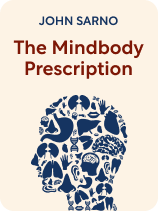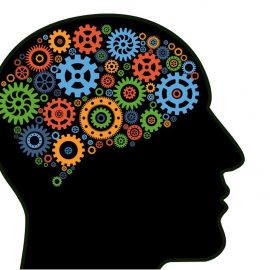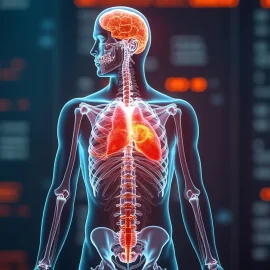

This article is an excerpt from the Shortform book guide to "The Mindbody Prescription" by John Sarno. Shortform has the world's best summaries and analyses of books you should be reading.
Like this article? Sign up for a free trial here.
What are common TMS symptoms? Does TMS look different in different people?
TMS symptoms include chronic fatigue, tendonitis, joint dysfunction, muscle weakness, joint pain, and a number of other often painful symptoms. If you know what TMS looks like, you’ll be able to address it appropriately.
Learn more about what TMS looks like and where they come from.
The Origins of TMS
Tension myositis syndrome (TMS) is caused by emotional tension that leads to the brain sending signals to the autonomic nervous system to reduce blood flow. This leads to oxygen deprivation and thus pain. TMS symptoms can take many forms, including joint pain, chronic fatigue, nerve pain, and more. However, we don’t yet understand how emotions produce these signals. The field of mindbody disorders is a new one, and little research has been done on it so far. It’s also closely tied into the overall functioning of the brain, which we also know very little about; we don’t know, in a medical or scientific sense, how the brain can think, or process stimuli, or generate novel ideas. However, this lack of knowledge isn’t a valid basis to discredit the mindbody theory.
(Shortform note: Research into the mindbody connection has made great strides in recent decades. Recent studies have identified neural connections between brain regions that control cognitive processes like thinking and planning, and regions that control involuntary bodily functions like heart rate and blood pressure. Ongoing research in this area may someday shed light on the neurological process that turns emotions into physical pain.)
Pressure Comes From Stress—Both Positive and Negative
Pressure results from both positive and negative events in our lives— not all the events that cause rage are bad, and some are even socially desirable. Two of the most stressful common life events are the death of a spouse and divorce, while marriage and reconciling with a spouse also rank highly on lists of common stressors.
This also includes negative stressors like serving jail time, mortgage foreclosures, and difficulties at work, positive stressors like personal achievement, vacations, and Christmas, and stressors that may range from negative to positive like changes in the frequency of spousal arguments, beginning or ending school, and changes in recreational or social activities.
(Shortform note: It may seem strange that positive stressors could result in repressed rage, since they’re usually accompanied by positive emotions. However, experts assert that any kind of stress leads to similar physical effects, such as increased breathing rate and increased levels of blood glucose. This suggests that since the physical impacts are similar, both negative and positive stressors can also lead to repressed rage.)
What Does Emotion-Driven Pain Look Like?
So far we’ve explained that pressure results in undesirable emotions like rage, that the unconscious mind represses these emotions, and that the brain distracts the conscious mind from these emotions by creating physical symptoms. These symptoms tend to include pain in the neck, shoulders, back, or legs. However, TMS can manifest in many different ways, all of which appear to be different conditions but which arise from the same source.
TMS symptoms can include nerve pain, joint pain, muscle weakness, inflammation, temporomandibular joint dysfunction, tendonitis, and chronic fatigue, all of which tend to be diagnosed as their own discrete disorders. Sarno also explains that TMS can manifest itself as seemingly unrelated but ultimately equivalent conditions such as tinnitus, dizziness, anxiety and depression, gastrointestinal disorders, circulatory and cardiac disorders, skin disorders, and genitourinary disorders (related to the genitals and urinary tract). Many of these symptoms can occur as a result of non-TMS conditions, but in those cases, treating the underlying condition should resolve the pain. Pain that has resisted multiple treatments is a strong indicator of TMS.
(Shortform note: Many of these symptoms and conditions are often lumped together under the diagnosis of “Medically Unexplained Symptoms,” particularly those that aren’t considered conditions in and of themselves (such as tinnitus). Critics of the Medically Unexplained Symptoms diagnosis argue that all symptoms can be medically explained, and that labeling them as “unexplainable” is dangerous because it can destroy patients’ hopes of having their symptoms effectively treated—and research shows that hope provides vital healing benefits. The TMS diagnosis could offer patients a less pessimistic outlook on their symptoms, especially since TMS is very treatable.)
Diversity of Symptoms Leads to Ineffective Treatments
This variety of symptoms and diagnoses means we’re frequently treating TMS symptoms with ineffective and invasive methods. Patients often undergo surgery, such as joint replacements, spinal fusions, and herniated disc surgery. Other treatments include medication, chiropractic, and different types of physical therapy. The treatment may be effective in temporarily treating the pain, but because the root cause hasn’t been addressed, the pain often recurs or is replaced by another manifestation of TMS.
(Shortform note: Research suggests that the frequency of ineffective treatments like those listed in this section is extremely high, as are the associated risks. In the US, about half a million lumbar spine surgeries are performed each year, but experts estimate that more than half of such surgeries are unnecessary. Additionally, 20% to 40% of back surgeries fail to treat back pain. These surgeries are often expensive and can result in dangerous complications. Other treatments can also be expensive, and pain medication can come with side effects ranging from headaches to breathing problems and seizures. As we’ll see in the next section, TMS treatment isn’t likely to come with such risks.)
| How the Brain Influences Blood Flow and Chronic Pain Understanding how circulation impacts the body’s functioning demonstrates the link between blood flow and chronic pain, as well as why the brain may be the key to managing blood flow and pain long-term. Blood is responsible for delivering not only oxygen, but other energy-providing nutrients to muscles. Additionally, it removes waste that builds up from muscle use. When muscles contract—for example, during exercise—blood vessels in those muscles constrict, and blood flow is temporarily reduced. When the muscles relax, the blood flow increases, and it remains elevated for a short time to compensate for the temporary reduction during contraction. This allows the body to replenish the muscles’ nutrients and oxygen and flush out the accumulated waste. However, stress is also shown to constrict blood vessels, impairing the body’s ability to replenish these nutrients and flush out waste. When this happens for an extended period, the long-term deprivation of oxygen and nutrients reduces muscles’ ability to heal. This could help explain why, even after a person gets temporary relief from exercise or heat therapy, their pain quickly returns once the treatment is over. It also highlights the brain’s role in this process: Without the brain’s commands to the autonomic nervous system to increase blood flow, any increased blood flow will be short-lived. Once treatment is over, the stressed brain will unconsciously signal the body to reduce that blood flow again—hence why the conscious blood flow manipulation involved in mindbody treatment is necessary for long-term pain-reducing results. |

———End of Preview———
Like what you just read? Read the rest of the world's best book summary and analysis of John Sarno's "The Mindbody Prescription" at Shortform.
Here's what you'll find in our full The Mindbody Prescription summary:
- A look at the chronic pain epidemic that's plaguing the Western world
- That the key to solving your pain is resolving your emotional tensions
- Why modern medicine doesn't recognize mindbody connection






